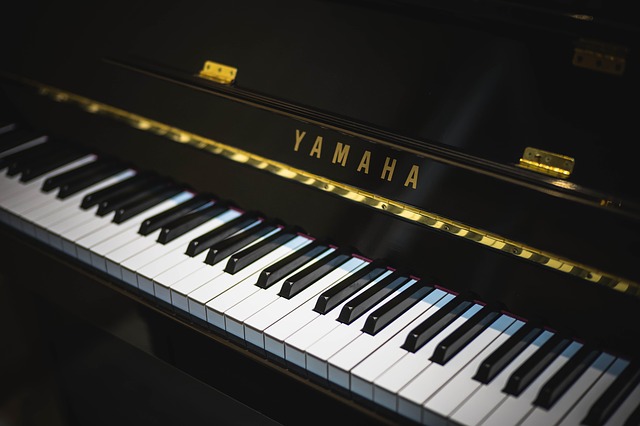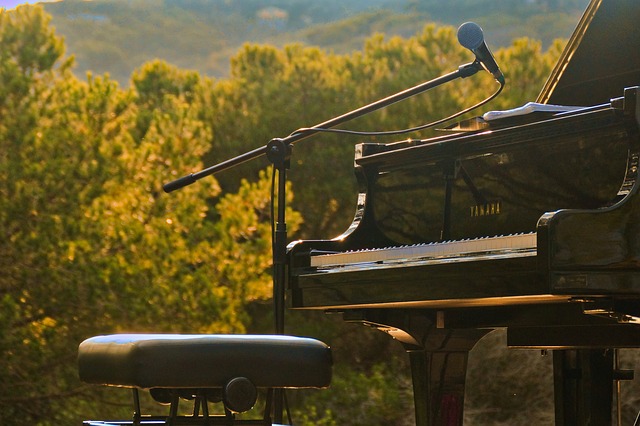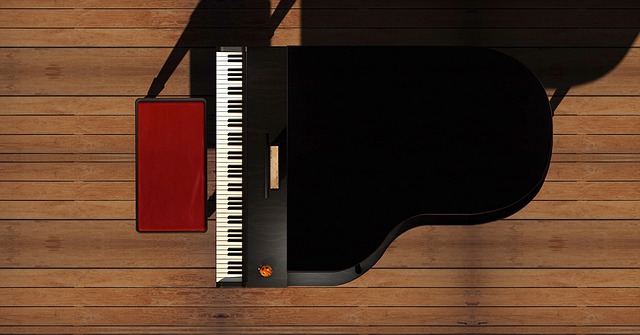
Most musicians today are familiar with the grand piano, but many people don’t know that this instrument has undergone a long evolution throughout its history.
Throughout this article, we’ll explore how pianos have developed over time by looking at some of these evolutions.
Up until the mid 18th century, there was a multitude of keyboard instruments that were plucked with the fingers rather than struck.
Many of these keyboards had evolved from harpsichords or similar string instruments, but they differed in their tone and style of use.
Some notable examples from this period include the clavichord, harpsichord, and spinet.
These keyboard instruments were normally operated by a single performer, and the range of these instruments was fairly limited.
The time period most commonly associated with these historical keyboards is the Renaissance era, but they saw development long before this period and continued to be built well into the 19th century for specialized purposes.
Origins of the piano
The very first pianos were manufactured during the late 1700s in Italy. This new instrument was designed to be played by several performers at once through a keyboard.
The tone of these instruments was rich and loud, which allowed them to be heard over large audiences.
The piano quickly spread throughout Europe after its invention, though it would remain fairly expensive since traditional string instruments were still being manufactured alongside pianos.
Many composers during the Classical period composed for the piano, including Mozart and Beethoven.
The Foundation of the Piano
In 1709, Bartolomeo Cristofori invented the piano when he constructed a string instrument with hammers and dampers.
This instrument was known as an ‘arpicembalo’, and it is widely considered to be the first-ever keyboard that features both a hammer mechanism and a damper system.
The invention of this instrument enabled performers to change the tone of the note after it was struck by a hammer, and this allowed pianos to be far more versatile than any other keyboard instrument.
The piano quickly rose in popularity during the 18th century due to advancements in design and manufacturing.
During this time period, many manufacturers started producing their own pianos since there were very few patents protecting the design of this instrument.
By the 19th century, pianos had grown in size and popularity to become one of the most common instruments in Europe.
Some popular composers during this time included Beethoven, Chopin, and Liszt; all of whom were known for composing on the piano.
The Fortepiano: The First Pianoforte
In the late 18th century, piano manufacturers started building ‘fortepianos’ which were similar to modern-day pianos.
These instruments featured a hammer action within the keys that replicated exactly how modern day pianos operate. The biggest differences between these two instruments are that fortepianos had a lighter touch and they weren’t very loud.
Fortepianos also featured a metal frame, which allowed the instrument to last longer than earlier models that were built without this feature.
The fortepiano was the first piano design to become widely accepted by performers and critics alike for its quality in replicating the sound of an orchestra through a single instrument.
Pianoforte
The “pianoforte” is the first piano design that was created to allow more instruments to be built. These pianos were primarily manufactured for use by amateurs or small groups, and they had a very quiet tone that wasn’t ideal for large auditoriums.
These pianos lacked the metal frame of later models, but they is still considered to be an important transitional point in the design of the piano.
The pianoforte also featured a wide range of dynamics that were unavailable in earlier instruments, and this made it possible for composers to write music with more subtlety.
The modern piano

During the 1800s, technological advancements increased the affordability of pianos, which led to an even larger spread throughout all of Europe.
As more people became interested in learning how to play this instrument, composers began to write increasingly more diverse compositions for the piano.
One of the most significant changes in piano history occurred during this period with the invention of iron strings. These new strings allowed pianos to be built with a much larger range than previous instruments.
As longer keys were adapted for the modern piano, composers began composing for the piano in a much more diverse way.
The grand piano
The grand piano today was developed around this time period, though modern versions of the instrument have continued to change since its invention.
Nowadays, pianos are considered to be one of the main instruments for composers during the Romantic era.
Many other changes have occurred over time that continues to impact the modern piano and its associated compositions. Pianos today can even be downloaded as MIDI instruments online for free.
There are certainly many more changes that have occurred in the history of piano development, but these examples provide a good overview of how the instrument has changed through different periods in history.
Modern Innovations Are Added to the Piano
With the invention of the modern piano in mind, one cannot help but wonder what the future holds for this musical instrument.
Though it would be nice to believe that no further changes will occur, history has taught us that this is often not the case.
The digital piano is one area of development we can expect to see changes in the near future. These pianos are often modeled after traditional acoustic piano designs and can be found online or in music stores.
The digital piano has quickly become a good choice for musicians who need to practice an instrument but don’t want to disturb those nearby with their playing noises.
The technology currently used for these instruments is very similar to that used in synthesizers and MIDI keyboard controllers, so sound quality is comparable to some of the finest traditional instruments.
There are many other areas where the piano could be improved in the future.
Composers continue to write new pieces for this instrument, which will require changes to current models or entirely new piano designs. Only time will tell what kinds of changes the future holds for the piano.
Types of Pianos

There are several varieties of pianos that you can find on the market. Knowing more about these different kinds of pianos will help you to better understand if a particular one is right for your needs and preferences.
Grand Piano: This type of piano is usually the best choice for professional musicians or those who play on a regular basis and want an instrument that is built to last.
These pianos are often made with very durable materials and also often have a wide range of dynamics and expressiveness in their sound.
- Related Post: The History of Bra – How Bra Invented And Evoluted
- Related post: What is the history of the guillotine invention
Digital Piano
Digital pianos may not be as high quality as grand pianos, but they are definitely good alternatives for those who want the feel of an acoustic piano without having to spend a fortune.
These instruments can also provide practice and learning opportunities for beginning musicians who don’t need all the bells and whistles of a full-sized piano.
Upright Piano
Many people think that upright pianos are similar to grand models, but they actually have very different designs. As the name suggests, these pianos stand upright and have a more traditional design with less dramatic angles.
Baby Grand Piano
The baby grand is a very compact version of the grand piano and can be a good choice for those who want to conserve space in their homes or studios.
Electric Pianos
Electric pianos are often modeled after traditional acoustic pianos but come equipped with built-in amplifiers. They are similar to the digital piano but may have more control options.
Stage Piano
Stage pianos are great for those who plan on performing live or playing in smaller venues where they need an instrument that is easy to transport and doesn’t take up too much space.
These instruments are very durable, usually, come with built-in speakers and often have a range of effects capabilities.
Synthesizer Pianos
As the name suggests, this type of piano is very similar to a traditional acoustic piano but comes equipped with additional sound options that are added through an onboard digital keyboard or MIDI controller.
Concert Grand Piano
If you want one of the best instruments money can buy, the concert grand is for you. These pianos are very high quality and used by many famous musicians who play in major venues around the world.
Electro-Acoustic Pianos
This category of piano combines traditional acoustic designs with other sound options that are added through speakers or electronic components.
Conclusion
Although the piano first appeared in Europe and was mostly used as an instrument for practicing or accompanying other instruments, it has since grown into a full-fledged musical tool that is capable of playing solo parts.
The next time you are in the market for an instrument, consider these various types of pianos to see if one suits your unique preferences and needs.



